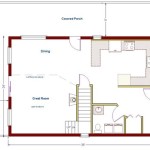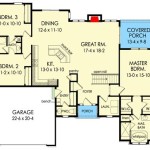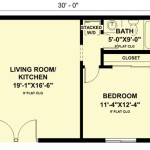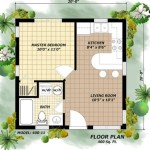What Is A Plan In Architecture
A plan in architecture is a technical drawing that shows the layout of a building from above. It is a two-dimensional representation of a three-dimensional space, and it is typically drawn to scale.
Plans are used for a variety of purposes, including:
- Conceptualizing a design: Plans help architects to visualize the layout of a building and to make decisions about the placement of rooms, windows, and doors.
- Communicating with clients: Plans help architects to communicate their design ideas to clients. They can also be used to obtain building permits from local authorities.
- Constructing a building: Plans provide detailed instructions for the construction of a building. They can be used by contractors to build the building according to the architect's design.
There are many different types of plans, including:
- Floor plans: Floor plans show the layout of a building on a single level. They typically include the placement of walls, doors, windows, and other features.
- Elevation plans: Elevation plans show the exterior of a building from one side. They typically include the placement of windows, doors, and other features.
- Section plans: Section plans show the interior of a building as if it were cut in half. They typically include the placement of walls, floors, and other features.
Plans are an essential part of the architectural design process. They help architects to visualize, communicate, and construct buildings.
The Elements of a Plan
A plan typically includes the following elements:
- The scale: The scale indicates the relationship between the size of the drawing and the size of the actual building.
- The north point: The north point indicates the direction of north on the drawing.
- The dimensions: The dimensions indicate the length and width of the building and the individual rooms.
- The walls: The walls are shown as lines on the drawing. They can be either solid or dashed, depending on whether they are load-bearing or non-load-bearing.
- The doors: The doors are shown as symbols on the drawing. They can be either open or closed, and they can be swung or sliding.
- The windows: The windows are shown as symbols on the drawing. They can be either open or closed, and they can be fixed or operable.
- The other features: Other features that may be shown on a plan include furniture, fixtures, and equipment.
Plans can be created using a variety of software programs, including AutoCAD, Revit, and SketchUp. Architects typically use these programs to create detailed and accurate plans that can be used for construction.
How to Read a Plan
Reading a plan can be difficult at first, but it is a skill that can be learned with practice. Here are a few tips for reading a plan:
- Start by looking at the scale: The scale will tell you the relationship between the size of the drawing and the size of the actual building.
- Find the north point: The north point will tell you the direction of north on the drawing.
- Identify the walls: The walls are shown as lines on the drawing. They can be either solid or dashed, depending on whether they are load-bearing or non-load-bearing.
- Locate the doors: The doors are shown as symbols on the drawing. They can be either open or closed, and they can be swung or sliding.
- Find the windows: The windows are shown as symbols on the drawing. They can be either open or closed, and they can be fixed or operable.
- Identify the other features: Other features that may be shown on a plan include furniture, fixtures, and equipment.
Once you have identified the basic elements of a plan, you can begin to interpret the drawing. By understanding the relationships between the different elements, you can gain a clear understanding of the layout of a building.

Floor Plan Wikipedia

The Architectural Plans With Examples Archiadvisor

The Importance Of Master Planning In Architecture Think Aec

How To Read Architectural Plans Jda Lammin Architects

Plan Section Elevation Architectural Drawings Explained Fontan Architecture

Example Of An Architectural Floor Plan Scientific Diagram

Architectural Drawings Architect S Plans Your Home

Architectural Floor Plans

Site Plan Wikipedia

The Importance Of Master Planning In Architecture Think Aec








